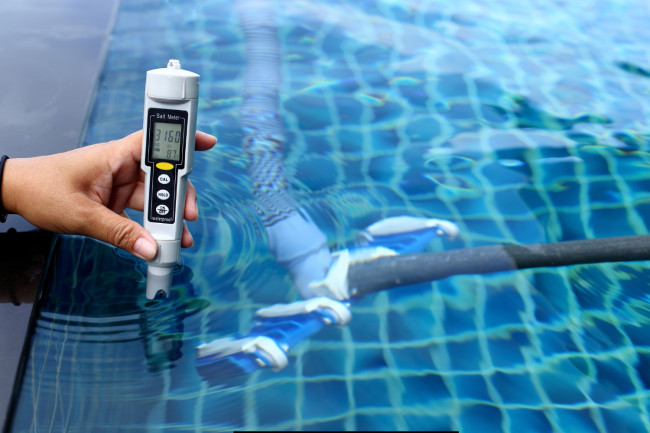
Introduction:
The growth of the thyroid gland is the hallmark of thyroid goitre, a condition that affects millions of people globally. Although the thyroid gland is essential for controlling metabolism and other body processes, excessive growth of the gland can cause pain, swallowing difficulties, and even cosmetic issues. It is crucial to comprehend the origins, signs, and available treatments for thyroid goitre to manage the condition effectively and enhance one's quality of life.
Understanding Thyroid Goiter:
The thyroid gland is a gland in the neck that secretes hormones that control growth, metabolism, and energy use. The term "goitre" describes the abnormal expansion of the thyroid gland and can be brought on by thyroid nodules, autoimmune illnesses, iodine shortages, or inflammation. Some goitres may not show any symptoms at all, while others can cause hoarseness, swallowing difficulties, noticeable neck enlargement, and in extreme cases, breathing problems.
Diagnosis of Thyroid Goiter:
A comprehensive medical history review, physical examination, and diagnostic testing are usually required to diagnose thyroid goitre. A medical professional may do imaging tests like an MRI, CT scan, or ultrasound to determine the size and shape of the thyroid gland in addition to blood tests to measure thyroid hormone levels and antibodies. Thyroid nodules can also be examined with a fine-needle aspiration biopsy to check for benign or malignant cells.
Treatment Options for Thyroid Goiter:
The underlying aetiology, the size of the goitre, and the existence of symptoms are some of the variables that determine the treatment strategy for thyroid goitre. Possible course of treatment options include:
a. Observation:
If the goitre is minor and asymptomatic, a medical professional could advise routine observation in the absence of treatment. Regular examinations can assist in monitoring any modifications to the goiter's size or symptoms.
b. Medications:
In order to restore hormone levels to normal and maybe shrink the goitre, thyroid hormone replacement treatment may be recommended. Furthermore, treatments such nonsteroidal anti-inflammatory drugs (NSAIDs) or corticosteroids can be used to reduce inflammation and symptoms related to thyroiditis.
c. Radioactive Iodine Therapy:
Thyroid cells selectively absorb radioactive iodine, which is administered as part of radioactive iodine treatment. In situations of hyperthyroidism or thyroid nodules in particular, this targeted medication can shrink the thyroid gland and reduce the size of the goitre.
d. Surgery (Thyroidectomy):
Thyroidectomy—the surgical removal of all or part of the thyroid gland—may be advised in cases when enormous goitres are producing severe symptoms, thyroid cancer is suspected, or existing therapies are not working well enough. Conventional open surgery or minimally invasive methods like endoscopic or robotically aided surgery can be used to accomplish thyroidectomies.
e. Ethanol Ablation:
To reduce thyroid nodules, ethanol (alcohol) is injected directly into them during ethanol ablation. Patients who are not candidates for surgery or who would rather use nonsurgical methods may be considered this less invasive technique.
f. Alternative Therapies:
To treat the symptoms of thyroid goiter, some people may look into complementary and alternative therapies including acupuncture, herbal supplements, or dietary changes. Even though these methods could help some people with their symptoms, they should only be used sparingly and under a doctor's supervision.
Considerations for Treatment:
Healthcare professionals weigh some criteria, such as the intensity of symptoms, the likelihood of complications, the patient's preferences, and general health state, before deciding on a course of therapy for thyroid goiter. Making decisions together, patients and healthcare professionals, is essential to creating customised treatment programmes that meet each patient's requirements and objectives while lowering risks and optimising advantages.
Post-Treatment Care and Follow-Up:
Following treatment for thyroid goiter, patients may require ongoing monitoring and follow-up care to assess treatment effectiveness, hormone levels, and any potential complications. Regular thyroid function tests, imaging studies, and clinical evaluations help ensure optimal management and early detection of recurrent goiter, thyroid dysfunction, or other thyroid-related conditions.
Emerging Therapies and Future Directions:
In addition to established treatment modalities, ongoing research and clinical trials are exploring novel approaches for managing thyroid goiter. These emerging therapies aim to address underlying molecular mechanisms, improve treatment efficacy, and minimize adverse effects. Some promising areas of investigation include:
a. Targeted Molecular Therapies:
Targeted molecular therapies focus on specific molecular pathways involved in thyroid cell proliferation, hormone production, and goiter development. These therapies may include small molecule inhibitors, monoclonal antibodies, or immunomodulatory agents designed to selectively target thyroid cells while minimizing off-target effects on healthy tissues.
b. Immunomodulatory Agents:
Given the role of autoimmune processes in certain types of thyroid goiter, immunomodulatory agents that modulate immune responses are being investigated as potential treatment options. These agents may help suppress autoimmune inflammation, reduce thyroid gland enlargement, and improve symptoms in patients with autoimmune thyroiditis or Graves' disease.
c. Gene Therapy:
Gene therapy approaches aim to correct genetic abnormalities or dysregulation associated with thyroid disorders, including goiter formation. By delivering therapeutic genes or gene-editing tools directly to thyroid cells, gene therapy holds promise for targeted interventions to normalize thyroid function, inhibit goiter growth, and restore hormonal balance.
d. Minimally Invasive Therapies:
Advancements in minimally invasive techniques, such as percutaneous ultrasound-guided therapies, offer less invasive alternatives to traditional surgery for thyroid goiter treatment. These approaches, including high-intensity focused ultrasound (HIFU) and laser ablation, deliver targeted energy to thyroid nodules or hyperplastic tissue, leading to necrosis and reduction in goiter size without the need for incisions or anaesthesia.
e. Personalized Medicine Approaches:
Personalized medicine approaches leverage genomic, proteomic, and clinical data to tailor treatment strategies to individual patients' genetic profiles, disease characteristics, and treatment responses. By identifying biomarkers predictive of treatment outcomes and disease progression, personalized medicine aims to optimize therapeutic efficacy, minimize adverse effects, and improve patient outcomes in thyroid goiter management.
Conclusion:
Thyroid goiter treatment continues to evolve with advancements in medical research, technology, and personalized medicine approaches. By staying informed about emerging therapies, participating in shared decision-making with healthcare providers, and adopting healthy lifestyle practices, individuals with thyroid goiter can actively manage their condition and optimize their quality of life. With ongoing efforts to improve diagnostic accuracy, treatment efficacy, and patient outcomes, the future holds promise for enhanced therapeutic options and better outcomes for individuals affected by thyroid goiter.
















